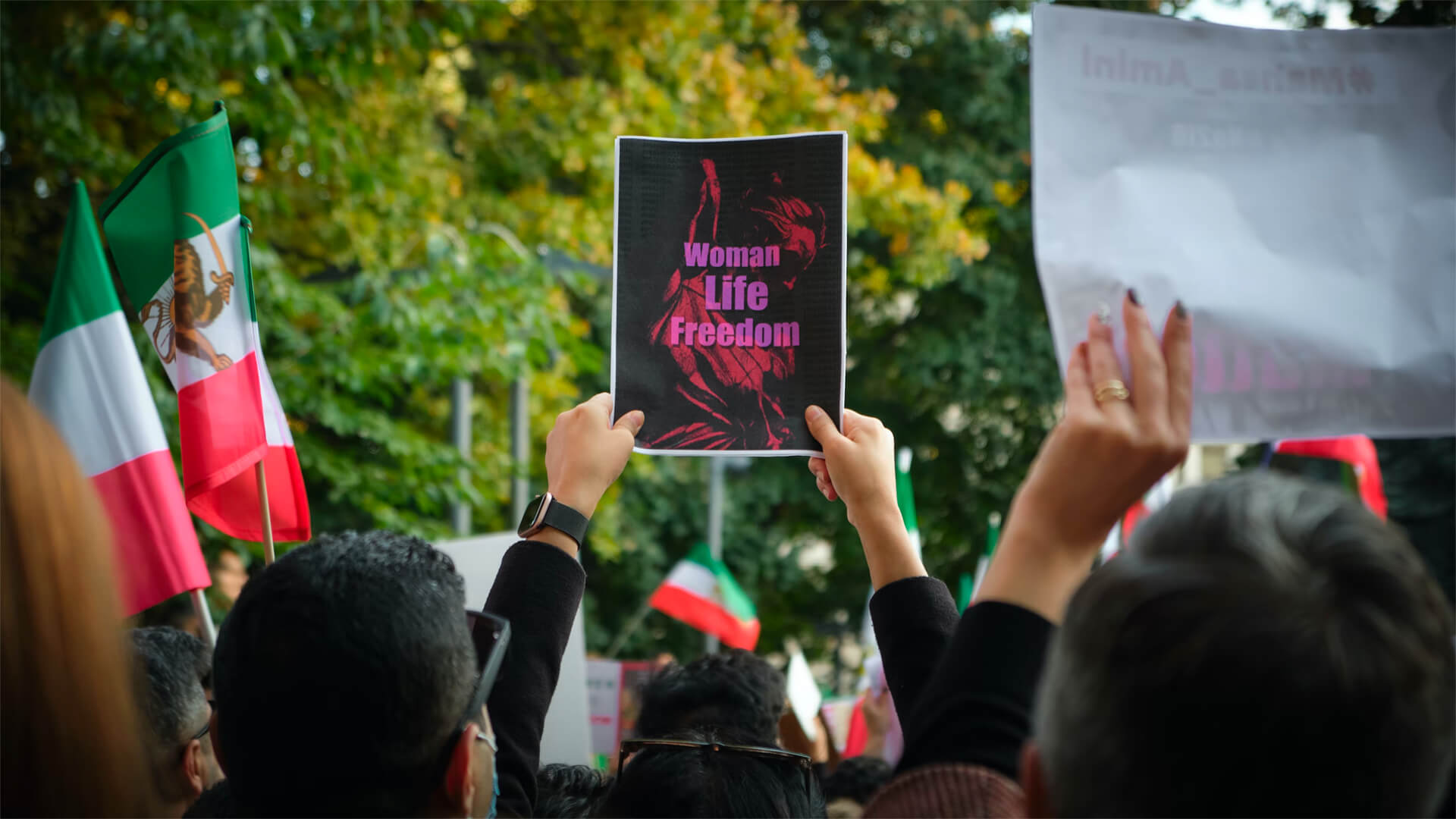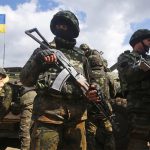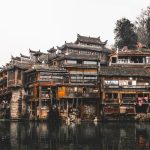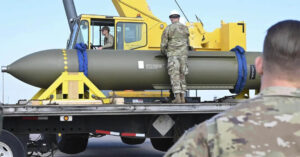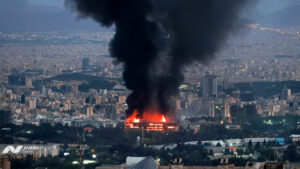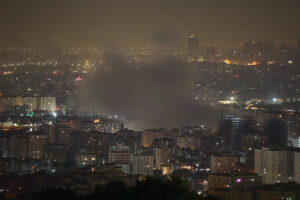I think an update will be helpful as Iran’s current spate of protests continue into their third month. I would like to state at the beginning of this update that as a personal matter, I stand with all people—especially the world’s youth—who yearn to live free, safe and productive lives. The people of Iran are no exception.
It’s also important to note that Iran has no semblance of a free or impartial media; there is a dearth of objective information about crowd sizes, and the number of deaths and arrests. This is by the regime’s own design. I have no doubt that the regime is arresting as many people as they can, and that state violence has proven to be fatal—likely hundreds of times. But every video and anecdote and photograph and story shared by protestors with the outside world is done with a stated goal and purpose. As I tell members of my own family, everything you’re seeing come from Iran is designed to break hearts, enrage, drive up engagement and support—not too difficult a thing when the opponent is the Islamo-fascist Iranian regime. But take certain characterizations with a grain of salt.
As I mentioned in our last update when protests began to escalate, Iran has been in the midst of several—often overlapping—periods of significant unrest, correlating with the sharp decline of the economy beginning in 2017. The current phase of protests lead by Iranian youth is not one that lists economic grievances at its core. The pithy, emotive slogan of “woman, life, freedom” presents a (n exceedingly Western friendly) set of demands around human rights and basic dignity. But make no mistake: Iran is a very poor country, and only getting poorer.
It’s also worth noting that despite many peoples’ assumptions, Iran is not a very young country. The 18–30-year-old cohort is the smallest segment of Iranian society.
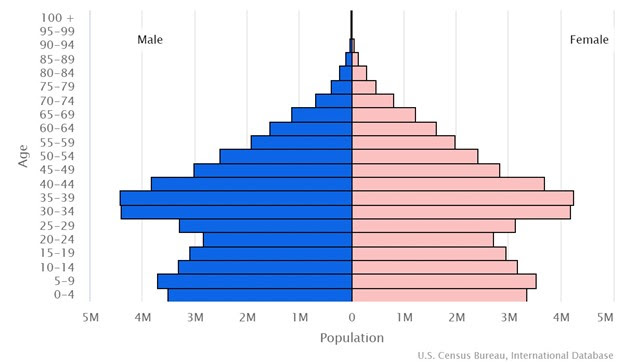
Since the early 1980s, Iran has seen one of the most precipitous drops in birthrates in the world:
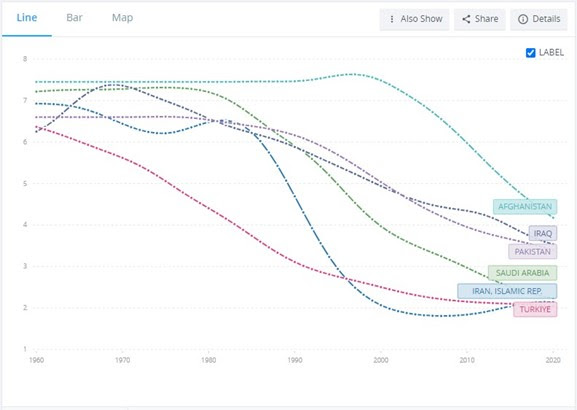
But let us not gloss over the truly sorry state of the Iranian economy. Iran’s current GDP per capita is less than Egypt’s. This is not a comparison most countries would welcome, and certainly not on the losing end. (Both are poorer, on a per capita GDP basis, than Iraq.) Iran’s youth face entrenched unemployment (near 30%). Iranian inflation is high (over 50%). The average Iranian household’s annual income is less than $10,000 USD. This is important context—for Iranian expats and descendants of Iranian expats living abroad, especially those who left Iran during the 1950s and the 1979 Revolution, the idea of deeply entrenched poverty in Iran is a surprise. Or a reality they have chosen to ignore.
But in the various and constant pensioner protests (pensions haven’t kept up with inflation), in the protests to fuel price hikes that lead to 2019’s Bloody Aban, in Khuzestan’s violent water protests of 2018, 2021, and 2022, in the various localized labor disputes of petroleum workers, the Haft Tappeh sugar factory, et al the common unifying thread is a deteriorating economic condition. And most of all: individuals’ dependance on the regime, its subsidies, and cash payments.
Tehran will blame sanctions and yes, sanctions have played a large role in eroding the Iranian economy, but blame is most fairly set squarely at the feet of the regime’s bad actions and economic mismanagement. This doesn’t change the fact, though, that most Iranians would struggle to pay for groceries if the regime disappeared tomorrow. Economic realities are not determinative, and I am not claiming that the limited ability of the Islamic Republic to soften the harshness of day-to-day life means that they will stay in power forever. But the quandary between freedom and food is not unique to Iranians, especially in their neighborhood: Libya, Syria, Iraq, Lebanon, and Yemen are all salient examples of the difficult transitions facing post-Revolutionary societies.
Which should not suggest I’m advocating for one outcome or another. I’m sure my “dream scenario” would align with many Iranians’, but I am in the business of delivering objective, data-driven analysis. This is why my overall assessment from August still holds: I don’t think the protests in Iran have risen—yet—to global geopolitical significance, despite the very emotional and human toll being paid by protestors. Why not? We haven’t seen any dissolutions or cracks within the ruling elite. Iran’s regional ambitions have not been curtailed. Tehran has not been cowed into accepting limits on its nuclear ambitions. Its regional adversaries are not ascendant. And we have not yet seen the kind of sustained, massive, cross-societal uprisings or protests needed to push a government out of power.
It’s also worth noting that due to geography and demographic makeup, Iran’s vast military, security and intelligence services are designed with domestic occupation in mind. This was as much true under the Shah as it has been after 1979—that the very same apparatus used to subjugate Iran’s population can be used to achieve regional ambitions beyond Iran’s borders is a bonus. Iran’s largest security challenge has always been from within; every region, sometimes every set of neighboring mountain valleys hosts a stunningly diverse array of cultures, ethnicities, languages and sectarian differences. I find it exceedingly unlikely that popular unrest will bring down the current clerical regime in Iran unless elements within the regime themselves choose to use public unrest to shift the structures of power.
The situation remains fluid, however, and there are several things I’m watching for to see any potential changes to our assessment:
- What is the size and make up of protests? Rather than seeing current protests as a new phenomenon, I instead see them as the entry of Iran’s youth into a growing, years-long movement of unrest against the Iranian regime. As I laid out earlier, the regime’s ability to contain dissent has all but disappeared. This is one of the most difficult questions to answer, as both the government and protest channels are not objective sources. Outside of restive areas like Kurdistan and Baluchistan, however, videos and photos of protests rarely show crowds larger than a few dozen to low hundreds. The crowds, especially when hooliganism takes over at night, are very young and disproportionally male. This will have to change if we’re going to see security forces shift tactics.
- Are security forces shifting tactics? The regime has been able to continue relying on local police and Basij forces, using a mix of live fire and less-lethal methods to push back crowds of protestors. This tells us several things, including protestor tactics are not becoming more sophisticated, and the numbers of protests (and numbers of protestors) are not overwhelming this first-line defenses of the regime. There have been no serious defections loss of support among the regime’s enforcers.
- Are protest tactics shifting? Despite social media hashtags claiming an #IranRevolution, or some journalists’ descriptions of scenes in certain cities being a “war zone” protestors are largely disorganized and diffused, contained to neighborhoods. Protestors are still largely using tire fires, burning the contents of dumpsters, and using petrol bombs (Molotov cocktails) and hurling stones in their engagements with regime security forces. We’re not seeing the formation of neighborhood militias. There are no significant signs of people being armed. Protestors aren’t building IEDs. The smoke, especially from trash and tire fires, equally obfuscates and adds dramatic flair to clashes—but hasn’t caused a substantive weakening to the regime. It is likely inhibiting larger/older crowds from gathering on the streets. Similarly, I tend not to focus on statues, banners, and posters of regime figures being attacked. If the parliament building gets sacked, however, that’s a different story…
- Is there unified, nation-wide participation? Many activists and the journalists they speak to will point to crowds of people in cars, shuttered shops, calls for labor strikes, etc as signs of passive but unwavering resistance to the regime. Maybe? The reality goes both ways. I would suggest many people look to the George Floyd protests that rocked cities across the United States (and eventually lead to the largest domestic mobilization of National Guard forces since WWII). Whether or not a business is closed in solidarity or in anticipation of violence isn’t always immediately discernable—leading both sides to be able to claim what they want. During the 1979 Revolution, the bazaaris, local business owners and traders, added considerable economic and social pressure on the Shah when they joined protestors in the streets. After decades of sanctions and the rise of the Islamic Revolutionary Guards’ (IRGC) role in the domestic economy, the number/size/scope of bazaar participation in modern protests is limited but still excites the expat community.
- Has the regime lost civil society? As of now, despite all the heartache, teachers and professors are still working. People are still sending their kids to school. Debris from protests is still being cleaned out of the streets. Mail is still being delivered. Fuel is still being refined. Food is still showing up on shelves. The quotidian minutia of the system comes together day after day, even after weeks of protests.
And most important:
- Is the regime still able to meet its basic economic commitments to the Iranian people? This might not make a sexy TikTok or dramatic share on Twitter, but if fuel prices rise—or petrol stations run out, the regime is in serious trouble. If the Islamic Republic can no longer provide subsidized bread, it likely has no future. Think of the ignoble end of the Rajapaksa dynasty in Sri Lanka—once the government could no longer guarantee access to basic staples like food and fuel, their fate was already sealed.
In addition to the things we’re looking for, I have some additional observations:
- There is a different kind of intensity when it comes to protests within Iran’s Kurdish regions, and in the long restive province of Sistan and Baluchistan. These are Sunni majority areas with distinct cultural and linguistic identities and histories of agitating for independence even before the 1979 Revolution. Iran’s Kurds are also the most politically organized pocket of resistance, with ties to militant Kurdish groups in Turkey and Iraq and a large, international diaspora. While protestors might chant “woman, life, freedom” the tone and timber of resistance among Iran’s Kurds and Baluchi populations (and to a lesser extent, Azeri) leads me to think that we are looking at the early stages of a renewed and bloody phase of conflict in both areas.
- Kurdish and Baluchi independence is anathema to most Iranians, however, which is likely why protestors are still organizing around the death of Mahsa Amini, a young Kurdish woman who died in police custody, and under the current banner of “woman, life, freedom.” But expect challenges to Iran’s territorial integrity, militancy, and a different magnitude of violence from state forces in response. The Islamic Republic will be keen to follow in the footsteps of Saddam’s Iraq and Syria’s al Assad regime in pitting restive minorities against its majority populations.
- While many are comparing Iran’s Supreme Leader to the Assad and Saddam regimes, there is a major difference: Iran’s ruling elite does not represent an ethnic or sectarian minority.
- I don’t see any outside power—US, EU, Russia, Saudi Arabia, Israel, etc—stepping in and forcing regime change. Also, I would not hold my breath regarding the return of the Shah’s family to power…
We’re not there yet, but I am often asked what I think “comes next” in terms of Iran, or what a post-ayatollah world looks like. I think the rule-by-ayatollah model is the most unpopular and weakest link of the current system. On paper, Iran’s clerical elite lend legitimacy to the IRGC, its subsidiaries like the Basij, and so on. And minus an initial short period after the revolution, Iran has only had one non-clerical president: Mahmoud Ahmadinejad. In reality, however, the ayatollahs and mullahs and so on are enabled and defended by the IRGC and the various state apparatuses they control. While I do not think this was always the case, the dependency of the part of the mullahs has increased significantly in recent years, especially since the 2009 Green Movement and with the rise of the sanctions economy. (If you want to get especially conspiratorial and discuss how the only winners in an Iran with an entrenched social protest culture and never-ending sanctions are the IRGC, you’ll find plenty of people who’d agree with you.) All this is to say, I think a charismatic, nationalist-populist leader could do very well for himself. Especially if he came from an IRGC background and could present a non-clerical face that would maintain much of the various state elements in place—namely the plum position of IRGC alumni.
Here at Zeihan On Geopolitics we select a single charity to sponsor. We have two criteria:
First, we look across the world and use our skill sets to identify where the needs are most acute. Second, we look for an institution with preexisting networks for both materials gathering and aid distribution. That way we know every cent of our donation is not simply going directly to where help is needed most, but our donations serve as a force multiplier for a system already in existence. Then we give what we can.
Today, our chosen charity is a group called Medshare, which provides emergency medical services to communities in need, with a very heavy emphasis on locations facing acute crises. Medshare operates right in the thick of it. Until future notice, every cent we earn from every book we sell in every format through every retailer is going to Medshare’s Ukraine fund.
And then there’s you.
Our newsletters and videologues are not only free, they will always be free. We also will never share your contact information with anyone. All we ask is that if you find one of our releases in any way useful, that you make a donation to Medshare. Over one third of Ukraine’s pre-war population has either been forced from their homes, kidnapped and shipped to Russia, or is trying to survive in occupied lands. This is our way to help who we can. Please, join us.

